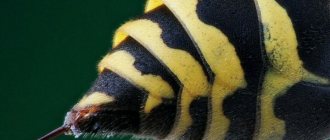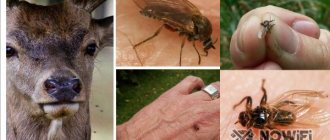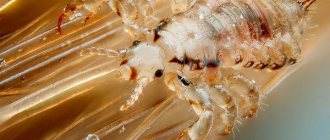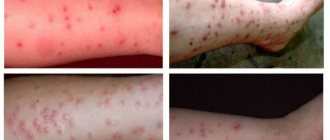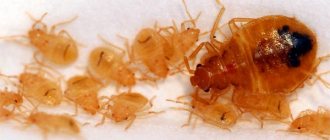Human African trypanosomiasis, also known as sleeping sickness, is a vector-borne parasitic disease. It develops as a result of infection with protozoan parasites belonging to the genus Trypanosoma. They are transmitted to humans through the bites of tsetse flies (genus Glossina), which acquire infection from humans or animals that host these pathogenic human parasites.
The tsetse fly is found only in sub-Saharan Africa, but only certain species transmit the disease. For reasons currently unexplained, sleeping sickness does not exist in many areas where the tsetse fly is found. Those most susceptible to tsetse fly bites and, consequently, to the disease are rural residents in areas where transmission occurs, those involved in agriculture, fishing, livestock raising and hunting. The disease develops in areas whose size varies from one village to an entire district. Within a given infected area, the intensity of the disease may vary between different villages.
Forms of human African trypanosomiasis
Human African trypanosomiasis has two forms depending on the type of parasite:
- Trypanosoma brucei gambiense is found in 24 countries in West and Central Africa. This form, which currently accounts for 98% of all reported cases of sleeping sickness, leads to chronic infection. A person can be infected for months or even years without showing any significant signs or symptoms of the disease. Symptoms often appear late in the patient's illness, when the central nervous system is affected.
- Trypanosoma brucei rhodesiense is found in 13 countries in Eastern and Southern Africa. This form, which currently accounts for less than 2% of reported cases, causes acute infection. The first signs and symptoms appear several months or weeks after infection. The disease develops quickly and affects the central nervous system. Both forms of the disease are found only in Uganda.
Another form of trypanosomiasis occurs mainly in Latin America. It is known as American trypanosomiasis or Chagas disease. The pathogen that causes Chagas disease belongs to a different subgenus of Trypanosoma and is transmitted by a different vector.
Why is tsetse dangerous for humans?
This insect is dangerous not only for humans, but also for any other mammal that does not have immunity to the diseases carried by these bloodsuckers. Tsetse flies are not poisonous flies, but very often they are carriers of the causative agent of trypanosoma sleeping sickness. They can also carry any other diseases that are transmitted through a fly bite.
On a note!
Trypanosome is a protozoan organism that causes parasitic disease in livestock and humans. Among domestic animals, only the Mosai ponies, which live in the Logone River valley, are resistant to sleeping sickness.
There are several types of trypanosomes. Two of them are dangerous to humans. The hosts of the infection are African antelopes, to which the parasite does not cause any harm. The bloodsucker sucks in the parasite along with the antelope's blood. Trypanosomes are also harmless to tsetse. These flies carry the disease, but do not die themselves.
Animal trypanosomiasis
Other species and subspecies of parasites of the genus Trypanosoma are pathogenic to animals and cause animal trypanosomiasis in some species of wild and domestic animals. This disease of cattle is called "nagana". Trypanosomiasis in domestic animals, especially cattle, is a significant obstacle to the economic development of affected rural areas.
Animals can be carriers of human pathogenic parasites, in particular Tb rhodesiense; thus, domestic and wild animals are important reservoirs of parasites. Animals can also be infected with Tb gambiense and are likely to act as a less significant reservoir. However, the real epidemiological significance of this animal reservoir for the Gambian form of the disease is still not well understood.
Do dung beetles live in apartments?
Since dung beetles are predators, they usually have nothing to eat in the house. Therefore, they are extremely rarely found in a person’s home, unless a fly flew into the house purely by accident.
Corrals for livestock are their habitat only during the mating season, when it is necessary to conceive and breed offspring. At this time, male dung flies flock to fresh dung and wait for females. When they appear, sometimes several gentlemen rush to one lady at once, trying to preserve their gene pool.
Entomological scientists have found that the most preferable for flies is the manure of pigs, as well as the manure of young calves feeding on milk. It stays fresh the longest and maintains the necessary temperature for the life and development of larvae, while horse manure dries out quite quickly.
Major human epidemics
Several epidemics have occurred in Africa over the past century:
- one epidemic from 1896 to 1906, mainly in Uganda and the Congo Basin;
- another epidemic in 1920 in a number of African countries; And
- the last epidemic that began in 1970 and lasted until the late 1990s.
In 1920, the fight against the epidemic was carried out by mobile teams that examined millions of people at risk. By the mid-1960s, the spread of the disease was under control, with fewer than 5,000 cases reported across the continent. Following this success, surveillance was relaxed and the disease reappeared, reaching epidemic proportions in several regions by 1970. In the 1990s and into the early 21st century, efforts by WHO, national disease control programmes, bilateral cooperation and the work of non-governmental organizations (NGOs) reversed the upward trend in new cases.
As the number of new cases of human African trypanosomiasis has decreased by 95% between 2000 and 2021, the WHO Roadmap for Control of Neglected Tropical Diseases has set a goal of eliminating it as a public health problem by 2021.
Population
The tsetse fly is distributed over a vast area - ten million square kilometers. These lands are fertile, but they are not cultivated or used for pasture. There is no development in the countries where the tsetse fly lives, and they are very poor. Animal husbandry and crop production do not develop there.
Tsetse infect humans with a disease called African trypanosomiasis. Surveillance is carried out on approximately four million people from fly zones that contain 70 million Africans.
People have been fighting tsetse flies for several decades. This led to a decrease in the natural population. The destruction of limited populations of tsetse flies is facilitated by the method of radiation of males and their spread throughout contaminated areas.
Scientists believe that a decline in the tsetse population does not harm the ecosystem at all. The implementation of insect control devastates regions and they become lifeless. The fly destroys the population, causes them to starve and harms the economies of African countries.
Burden of disease
Sleeping sickness threatens millions of people in 36 countries in sub-Saharan Africa. Many of these people live in remote areas with limited access to essential health care, making surveillance and therefore difficult to diagnose and treat cases. In addition, population movements, war and poverty are important factors facilitating transmission.
- In 1998, almost 40,000 cases of the disease were reported, but an estimated 300,000 were undiagnosed and, as a result, untreated.
- During the most recent epidemic, disease prevalence reached 50% in some rural communities in Angola, the Democratic Republic of the Congo and South Sudan. In these communities, sleeping sickness was the first or second leading cause of death, surpassing even HIV/AIDS.
- In 2009, systematic efforts to control the disease brought the number of reported cases to below 10,000 (9,878 cases) for the first time in 50 years. The decline in incidence continued in subsequent years, with 977 new cases reported in 2021, the lowest number in 80 years of systematic global data collection on the disease. The population at risk of the disease is estimated to be 65 million.
Tsetse control methods
60 million people living in rural areas are under constant threat of contracting sleeping sickness in Africa. At the same time, danger loomed over 50 million animals. In the 20th century Various insect control tactics were used:
- Scorched Earth - To reduce or completely destroy Glossina, they killed all the animals on which it fed. Deprived of a food source, the flies died. The method is questionable and gives short-term results. One misconception was the assumption that tsetse feeds only on large mammals. They killed antelopes, lions, and elephants without pity. It turned out that the blood-sucking parasite feeds on reptiles and rodents.
- Deforestation is a practice similar to the previous tactics, only trees were destroyed. This deprived the tsetse imago of its usual living conditions. It turned out that deforestation does more harm than good.
- Pesticides - drugs used to kill pests - were sprayed from airplanes and applied to animals. The method turned out to be ineffective.
- Traps - one of the simplest and most primitive methods gives good results. To attract insects, an artificially created odor is used, similar to animal breath or livestock urine. The trap itself is a dark cloth or buffalo hide impregnated with insecticides.
- Sterile males are one of the most successful solutions to reducing the population of a harmful parasite. Male tsetse are irradiated and released into insect habitats. After mating, females cannot produce offspring; their eggs remain unfertilized. This method gave good results in Zanzibar. The only negative is the lack of a water barrier with neighboring countries, from where healthy males can arrive.
Advice. Tourists traveling to the African continent should take care of personal safety equipment. These include repellents, white protective clothing and a face net.
There is also a diametrically opposed view on the significance of the tsetse fly in the development of Africa. One of the wildlife defenders, Bernard Grzimek, believes that its existence protects the country's ecosystem from the invasion of Western civilization. The territories where the insect lives remain free from humans; they belong entirely to the local inhabitants.
Current situation in endemic countries
Prevalence rates of the disease vary between countries and within different parts of a given country.
- Over the past 10 years, more than 70% of reported cases of the disease have occurred in the Democratic Republic of Congo.
- Between 10 and 100 new cases were reported in Angola, the Central African Republic, Chad, Congo, Gabon, Guinea, Malawi and South Sudan in 2021. That same year, between one and 10 cases were reported in Cameroon, Côte d'Ivoire, Equatorial Guinea, Kenya, Uganda, the United Republic of Tanzania, Zambia and Zimbabwe.
- Countries such as Burkina Faso, Ghana and Nigeria have reported sporadic cases over the past 10 years.
- Countries such as Benin, Botswana, Burundi, Ethiopia, Gambia, Guinea-Bissau, Liberia, Mali, Mozambique, Namibia, Niger, Rwanda, Senegal, Sierra Leone, Swaziland and Toga have not reported any new cases of the disease. In these countries, transmission appears to have been stopped, but there remain some areas where it is difficult to accurately assess the actual situation because social instability and/or inaccessibility make surveillance and diagnosis difficult.
Features and habitat of the tsetse fly
The flight of a tsetse fly is quite difficult to hear with the “naked ear,” which, combined with its very modest dimensions (the average size varies from 10 to 15 mm), gives these insects the well-deserved reputation of “silent killers.”
Just look at the photo of a tsetse fly to understand that their appearance resembles the flies we are used to, but has its own differences. For example, on the head of the insect there is a kind of “proboscis”, with which the tsetse fly is able to pierce not only the delicate human skin, but also the thick skin of animals such as an elephant or buffalo.
What does a tsetse fly look like ? Most individuals have a gray-yellow color. The insect's mouth contains a huge number of sharp microscopic teeth, with which the tsetse fly gnaws directly through blood vessels to extract blood.
Saliva contains enzymes that prevent the victim's blood from clotting. Unlike mosquitoes, in which only females suck blood, tsetse flies of both sexes drink blood. During blood absorption, the insect's abdomen increases significantly in size.
In Africa, the tsetse fly lives virtually everywhere. There is one species that lives in Australia. These flies prefer to settle directly in tropical rainforests or near water, often forcing people to abandon the best pastures and magnificent agricultural lands.
Infection and symptoms
The disease is mainly transmitted by the bite of an infected tsetse fly, but there are other ways that sleeping sickness can spread to people.
- Mother-to-child transmission: Trypanosomes can cross the placenta and infect the fetus.
- Mechanical transmission through other blood-sucking insects is possible. However, assessing the epidemiological impact of such transmission is difficult.
- In laboratories, cases of unintentional infection occur as a result of sticking with a contaminated needle.
- There is also information about the transmission of the parasite through sexual contact.
At the first stage, trypanosomes multiply in subcutaneous tissues, blood and lymph. This stage is known as the hemolymphatic phase, which is characterized by bouts of fever, headache, swollen lymph nodes, joint pain and itching.
In the second stage, the parasites penetrate the blood-brain barrier and infect the central nervous system. This stage is known as neurological, or meningoencephalitic. In general, the most obvious signs and symptoms of the disease appear at this stage: behavioral changes, confusion, sensory disturbances and loss of coordination. The sleep cycle disorder that gives this disease its name is an important feature of its second stage. Without treatment, sleeping sickness is considered fatal, although cases of healthy carriers of the infection have been reported.
Interesting facts
An amazing insect, feeding exclusively on blood and capable of destroying thousands of living beings, could not help but become the object of meticulous research, during which a huge amount of interesting information was revealed. Interesting facts about the insect:
- The name sounds strange and nonsensical to most peoples, but in the language of the African aborigines, tsetse means “cattle slaughterer.”
- Half a million people living in sub-Saharan Africa are infected with trypanosomes as a result of the bite of Glossina.
- The fact that the tsetse fly is a carrier of some kind of disease was known back in the middle of the 19th century, but the mechanism of the disease began to be thoroughly studied only at the beginning of the last century.
- More than 3 million heads of livestock suffer annually from insect bites and up to 10 thousand people die.
- In 1934, Howard Lovecraft created a story called “The Winged Death,” which describes the death of a man from the bite of a “devil fly” and the subsequent transmigration of the victim’s soul into the body of an insect. According to the protagonist, “the bite of such a fly means certain death for everyone and everything within seventy-five days.”
- A fly that smells prey strives to drink blood at any cost - even if you stun the tsetse or break its wings, the insect will still make attempts to get to its victim.
- In the 40s of the last century, strong insecticidal preparations were invented aimed at combating Glossina, but their use had to be abandoned - the substances posed a significant threat to the environment.
- Among programmers, “tsetse” is the name for a problem that occurs when a Seagate hard drive fails and is displayed in the LED error code: 00CC FAddr:024A051.
Insects of the genus Glossina are deadly, so before visiting exotic African countries you should definitely undergo the vaccination procedure and stock up on all necessary medications, and if bitten, immediately seek medical help.
This harmful fly lives in Central Africa, West Africa (4 species) and Australia (1 species). They prefer humid tropical places: forests, river banks and adjacent fields. There are a lot of them there.
Disease management: diagnosis
Disease management is carried out in three stages.
- Screening to detect potential infection. This involves performing serological tests (available only for Tb gambiense) and checking for clinical signs - mainly swollen glands in the neck.
- Diagnostics to determine the presence or absence of a parasite.
- Determining the stage of the disease. This involves a clinical examination and, in some cases, examination of cerebrospinal fluid obtained through a lumbar puncture.
To avoid complex, difficult and risky treatment procedures, the diagnosis should be made as early as possible and before the onset of the neurological stage.
Long-term, relatively asymptomatic first stage of sleeping sickness caused by T. b. gambiense is one reason why comprehensive, active screening of at-risk populations is recommended to identify patients at an early stage of disease and limit further transmission by eliminating these patients as a reservoir. Conducting such comprehensive screening requires large investments in human and material resources. In Africa, these resources are often very scarce, especially in remote areas where the disease is most common. As a result, many infected people die before being diagnosed and treated.
Description of the insect
Tsetse, or Glossina, is a genus of flies in the family Glossinidae, which includes more than twenty different species. These insects are called the scourge of Africa, because even today, despite all scientific advances, they continue to destroy livestock and claim thousands of human lives. The tsetse fly has a reddish-gray chest with two pairs of dark brown longitudinal stripes and a yellow-gray abdomen. At first glance, it is practically no different from an ordinary indoor one, surpassing the latter only in body size - 9-14 mm. However, there are also characteristic features that make it possible to recognize representatives of the genus Glossina:
- The nature of the folding of the wings. Unlike other species, when at rest, the tsetse fly folds its wings in such a way that they overlap each other, like the blades of scissors.
- Hairs on the spine. The insect's antennae have awns with thin hairs branched at the ends.
- Proboscis. Ordinary houseflies have a licking-sucking mouthpart and cannot bite through the skin, but hematophages of the genus Glossina have a thick elongated proboscis attached to the bottom of the head and directed forward.
- Pattern on the wings. The veins on the wings of the tsetse fly look very peculiar - they clearly show an ax-shaped pattern.
This video talks about the consequences of a tsetse fly bite:
Treatment
The type of treatment depends on the form and stage of the disease. Medicines used in the first stage are less toxic and easier to take. The earlier the disease is detected, the better the prospects for treatment. To evaluate the results of treatment, it is necessary to monitor the patient's condition for a period of up to 24 months and conduct clinical examinations and laboratory tests of body fluids, including, in some cases, obtained by lumbar puncture of cerebrospinal fluid, since the parasite can remain viable for a long time time and cause relapses of the disease many months after the end of treatment.
Successful treatment in the second stage requires drugs that can penetrate the blood-brain barrier and act on the parasite.
In 2021, WHO published new guidelines for the treatment of the Gambian form of human African trypanosomiasis. A total of six drugs are registered for the treatment of sleeping sickness. These drugs are donated to WHO by manufacturers and distributed free of charge in disease-endemic countries.
Drugs used in the first stage
- discovered in 1940, used to treat sleeping sickness Tb gambiense in the first stage. Despite the presence of undesirable reactions that cannot be ignored, the drug is generally well tolerated by patients.
- Suramin: discovered in 1920, used to treat Tb rhodesiense in the first stage. It has some unwanted effects on the urinary tract and causes allergic reactions.
Drugs used in the second stage
- Melarsoprol: discovered in 1949, used to treat both forms of infection: the Gambian and Rhodesian forms. It is a derivative of arsenic and causes numerous unwanted side reactions. The most severe of these is reactive encephalopathy (encephalopathic syndrome), which can be fatal (in 3%–10% of cases). It is currently recommended as a first-line treatment for the Rhodesian form of infection, but is rarely used for the Gambian form of infection.
- Eflornithine: less toxic than melarsoprol, registered in 1990 and effective only against Tb gambiense. It is usually used in combination with nifurtimox (as part of nifurtimox-eflorintin combination therapy), but can also be used as monotherapy. The treatment regimen is complex and inconvenient to use.
- Nifurtimox: Combination treatment with nifurtimox and eflornithine (NECT therapy) was first proposed in 2009. It simplifies the use of eflornithine by reducing dosing time and the number of intravenous perfusions, but unfortunately its effectiveness for the treatment of Tb rhodesiense has not yet been studied. Nifurtimox is registered for the treatment of American trypanosomiasis, but not human African trypanosomiasis. However, after clinical trial data on safety and effectiveness, this drug in combination with eflornithine was included in the WHO List of Essential Medicines. WHO provides both drugs free of charge to endemic countries, along with all materials necessary for their use.
Drugs used to treat both stages of the diseaseFexinidazole is a new oral drug for the treatment of the Gambian form of human African trypanosomiasis. Included in the WHO Essential Medicines List and recommended according to WHO guidelines for the treatment of human African trypanomosis. This compound is indicated as a first-line drug for the first stage and mild second stage of the disease. It should be taken under the supervision of qualified medical personnel within 30 minutes after the main meal.
Social structure and reproduction
Photo: Tsetse fly Madagascar
Tsetse - produces 8-10 broods in its entire life. The female tsetse mates only once. After 7 - 9 days, she produces one fertilized egg, which she stores in her uterus. The larva develops and grows using maternal nutrients before being released into the environment.
The female requires up to three blood meals for the intrauterine development of the larva. Any failure to obtain blood food may result in abortion. After about nine days, the female produces a larva, which immediately buries itself in the ground, where it pupates. The hatched larva develops a hard outer layer called the puparium. And the female continues to produce one larva at approximately nine-day intervals throughout her life.
The pupal stage lasts about 3 weeks. Externally, the molting skin (exuvium) of the pupa looks like a small, hard-shelled, oblong living substance with two characteristic small dark petals at the tail (breathing) end. The length of the pupa is less than 1.0 cm. In the shell of the pupa, the fly completes the last two stages. The adult fly emerges from the pupa in the ground after about 30 days.
Over the course of 12-14 days, the newborn fly matures, then mates and, if female, lays its first larva. Thus, 50 days pass between the appearance of one female and the subsequent appearance of her first offspring.
Adults are relatively large flies, 0.5-1.5 cm long, which have a recognizable shape, making them easily distinguishable from other flies.
Public-private partnerships
In 2000 and 2001 WHO has established public-private partnerships with Aventis Pharma (now Sanofi) and Bayer HealthCare, which has led to the creation of a WHO-led disease surveillance and control program that supports epidemic control efforts in endemic countries and provides free stocks of drugs.
These partnerships have been renewed for 2006, 2011 and 2021. Because of the success in reducing the incidence of sleeping sickness and the realistic prospect of its elimination, a number of other private partners have supported the WHO initiative to eliminate the disease as a public health problem.

